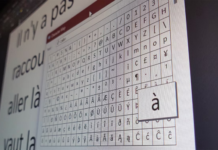The handy and useful keyboard shortcuts to understanding in Microsoft Outlook.
There is no doubt that Microsoft Outlook is significantly more powerful and flexible than Mail or another desktop email client on the market. However, with it being packed with so many helpful features, it may be overwhelming and hard to navigate–unless you understand these fundamental Microsoft Outlook keyboard shortcuts, which we have provided for you in cookie structure.
| Keyboard Shortcut | Description |
|---|---|
| General Shortcuts | |
| F1 | Help |
| F3 | Find a contact or other item |
| F4 | Find or replace |
| F7 | Spellcheck |
| F9 | Check for new messages |
| F11 | Find a contact |
| F12 | Save As (only in Mail view) |
| Delete | Delete selected item (message, task, or meeting) |
| Shift + Ctrl + A | Create a new Appointment |
| Shift + Ctrl + B | Open the Address Book |
| Shift + Ctrl + C | Create a new Contact |
| Shift + Ctrl + E | Create a new folder |
| Shift + Ctrl + F | Open the Advanced Find window |
| Shift + Ctrl + H | Create a new Office document |
| Shift + Ctrl + I | Switch to Inbox |
| Shift + Ctrl + J | Create a new Journal Entry |
| Shift + Ctrl + K | Create a new Task |
| Shift + Ctrl + L | Create a new Contact Group |
| Shift + Ctrl + M | Create a new Message |
| Shift + Ctrl + N | Create a new Note |
| Shift + Ctrl + O | Switch to the Outbox |
| Shift + Ctrl + P | Open the New Search Folder window |
| Shift + Ctrl + Q | Create a new Meeting Request |
| Shift + Ctrl + U | Create a new Task Request |
| Ctrl + Alt + 2 | Switch to Work Week calendar view |
| Ctrl + Alt + 3 | Switch to Full Week calendar view |
| Ctrl + Alt + 4 | Switch to Month calendar view |
| Message Shortcuts | |
| Shift + Ctrl + R | Reply All |
| Ctrl + A | Select All |
| Ctrl + B | Bold |
| Ctrl + C | Copy selected text |
| Ctrl + F | Forward message |
| Ctrl + H | Find and replace text |
| Ctrl + K | Check names against Address Book |
| Ctrl + O | Open |
| Ctrl + P | |
| Ctrl + Q | Mark selected message read |
| Ctrl + R | Reply |
| Ctrl + S | Save message as draft |
| Ctrl + U | Mark selected message unread |
| Ctrl + V | Paste copied text |
| Ctrl + X | Cut selected text |
| Ctrl + Y | Go to folder... |
| Ctrl + Z | Undo |
| Ctrl + Alt + J | Mark message as Not Junk |
| Ctrl + Alt + M | Mark message for download |
| Alt + S | Send message |
| Quick Navigation | |
| Ctrl + 1 | Switch to Mail view |
| Ctrl + 2 | Switch to Calendar view |
| Ctrl + 3 | Switch to Contacts view |
| Ctrl + 4 | Switch to Tasks view |
| Ctrl + 5 | Switch to Notes |
| Ctrl + 6 | Switch to Folder List |
| Ctrl + 7 | Switch to Shortcuts |
| Ctrl + Period | Switch to next open message |
| Ctrl + Comma | Switch to previous open message |
| Alt + H | Go to Home tab |
| Alt + Left | Go to previous view in the main Outlook window |
| Alt + Right | Go to next view in the main Outlook window |
As soon as you’ve mastered those keyboard shortcuts, it is possible to choose your productivity to another level by studying these best practices for Microsoft Outlook and integrating such command-line switches for Outlook into your workflow. And if you use Outlook on Mac, have a look at our entire collection of all Microsoft Office for Mac keyboard shortcuts.
Related Topic:
The Essential Google Drive Keyboard Shortcuts You Need to Know



